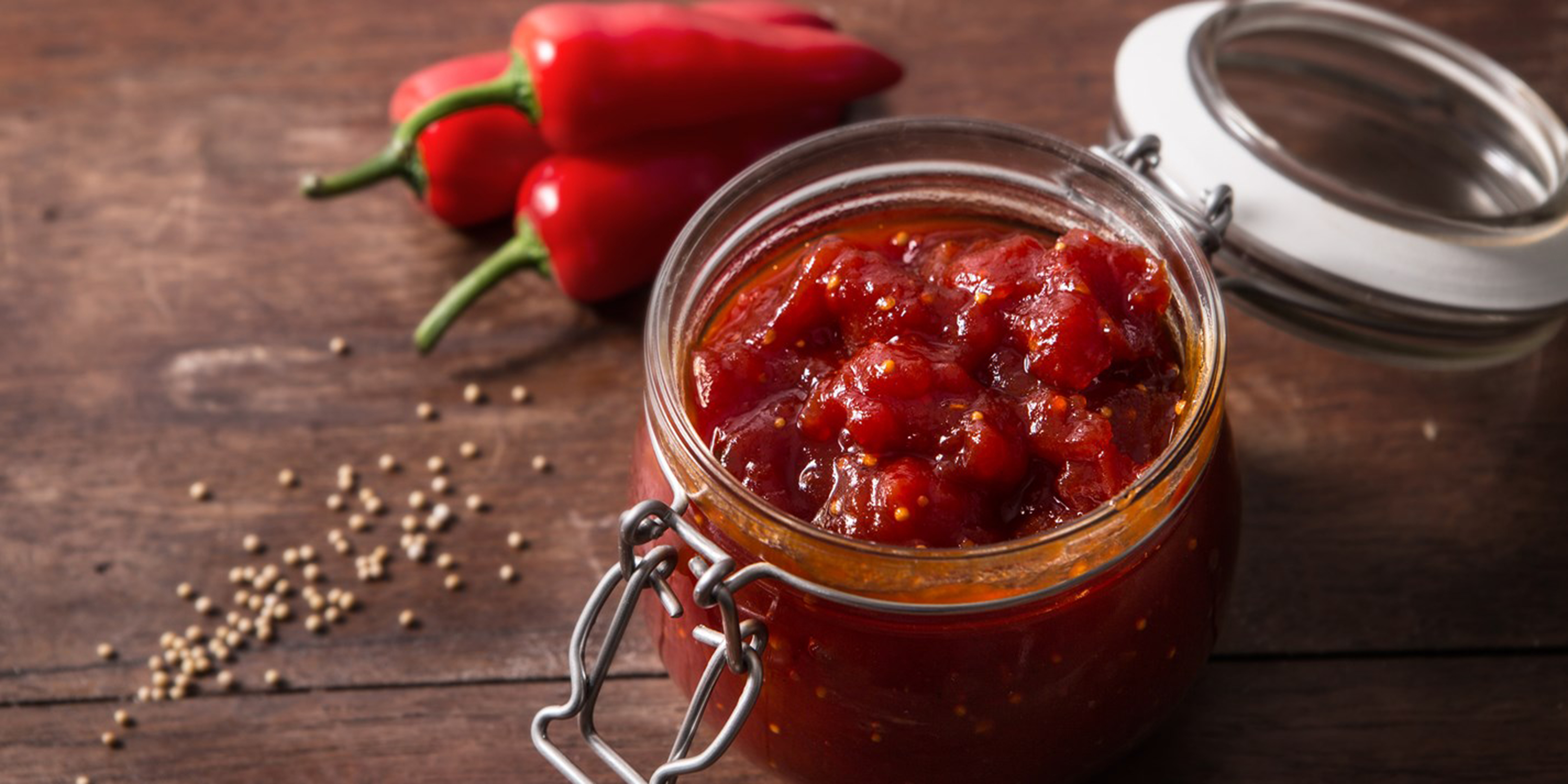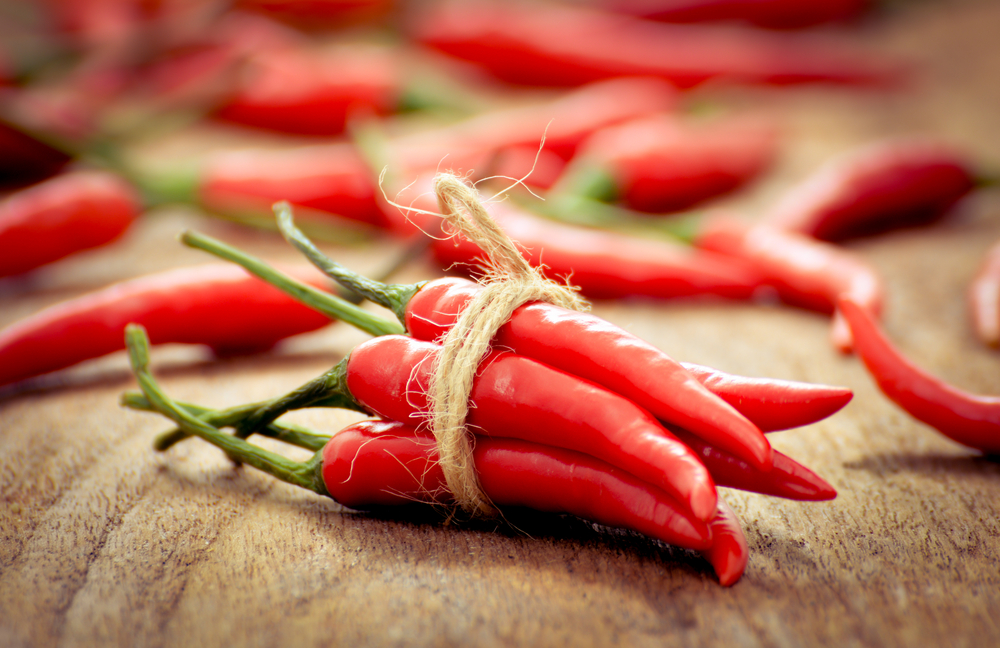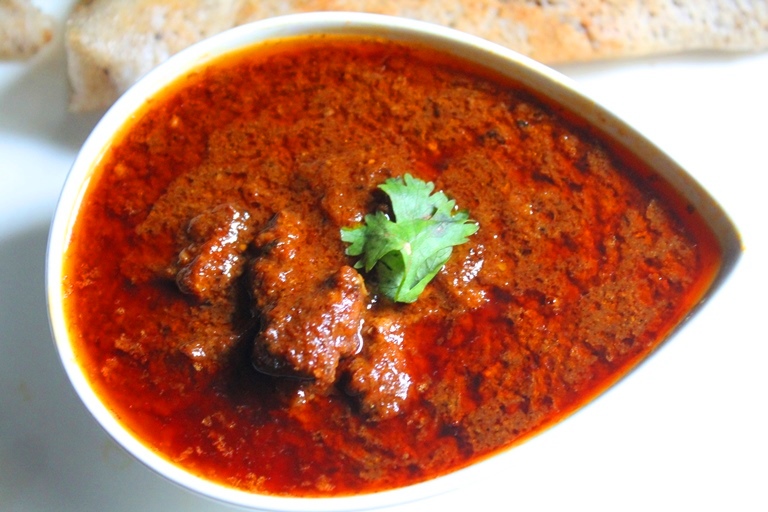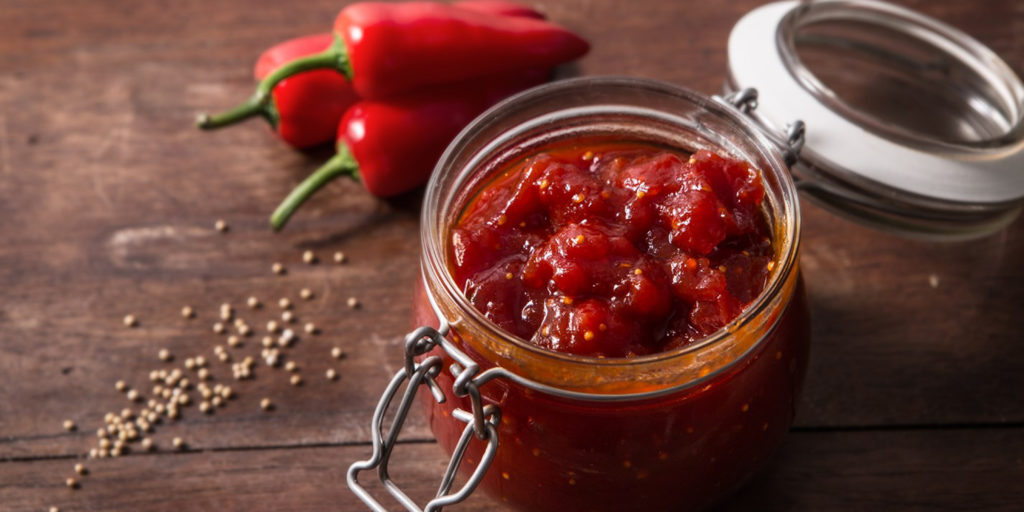What is common to the words Bhut Jalokia, Byadgi, Bird eye, Mundu, Kashmiri, Jwala, Guntur, and Kanthari? Well, these are varieties of red chilli – the spice you may love or hate but can never ignore.
Variants Galore
There is an amazing variety of red chillies available in the country and their taste and spice level vary making this easily one of the most exciting spices to work with in the kitchen. “Chillies are integral to Indian cooking and most of us Indians have developed stomachs of steel having grown up eating chillies. Used in almost every dish, it’s a major commercial cash crop in our nation and though the chilli arrived in India only in the 16th century, it has now become synonymous with our cuisine,” says Swadeep Popli, Owner, The Chatter House. Red Chillies is mostly used in three forms; fresh red, dried red and powdered red. Kashmiri Chillies are mild and therefore one of the most popularly used variants across the country. “Guntur chillies from Andhra and Madhya Pradesh add heat due to their spice quotient. Dhani or Bird Eye Chillies from North India are commonly used for cooking, pickling and in the preparation of chutneys. Naga chillies are one of the hottest in the world. Mundu Chilies from Tamil Nadu and Andhra Pradesh enhance flavour. Jwala Chillies from Gujarat are a very popular variant and are used extensively in home-style cooking. The unique and flavoursome Kanthari Chillies from Kerala are pale when ripe and mature. Karnataka’s Byadagi Dry Chillies are long and thin, and are very similar to paprika,” says Chef Subrata Debnath, Executive Chef, Vivanta by Taj – Gurgaon. Sunil Agarwal, Director – Kraft Appliances adds, “Punjabi and Rajasthani food are well known for spicy food and using red chillies in abundance. Red chillies are dried or pickled in order to store them for a longer period of time. Red chillies are also used extensively for making sauces which are used to add spice to other dishes.”
Spice it Up
India is the largest producer of red chillies in the world besides being the largest exporter and consumer of the same. “Andhra Pradesh is the largest producer of chillies in India with more than five of the eighteen to twenty chillies in India as identified by The Spices Board of India. Our country boasts of multiple regional cuisines and the food taste varies literally from one state to the other. So, depending on the state cuisine the chillies are used accordingly,” says Chef Ravi Saxena, corporate chef of Dhaba By Claridges. Apart from being used as a tempering, there are several dishes that use red chillies as the main ingredient like Rajasthani Lal Maas, Awadhi Mirchi Korma and Goan Pork Vindaloo. Satyajit Kotwal, GM, The Resort Hotel, Mumbai explains, “chillies are used widely for pickling purpose. Whole/chopped red as well as green chillies are used along with other spices to make them into delicious pickles. Also, dishes are made using whole chillies – it could be Mirch ka Salan or Mirch ka Pakoda.” India cooks with chillies that have always been known as ingredients that add spice to Indian food. “In ready to eat salads, chaats or chutneys fresh red chillies give a great aroma and taste. However if my recipe calls for cooking chillies then I prefer using powdered option when I need velvety texture in my curries, crushed dry chillies when using for tempering or making a dry preparation,” says Celebrity Chef Akshay Nayyar, Co-owner, Kopper Kadai.
Health Matters
Chillies are considered of superfood status primarily due to a chemical called capsaicin. This chemical is well-known for its anti-inflammatory, analgesic, anti-cancer, heart-healthy benefits. “Also, chillies are rich in antioxidant carotenes and flavonoids, they have about twice the amount of vitamin C found in most citrus fruits. The heating nature of chillies is associated with their ability to stoke the digestive fire so chilli powder is often added to buttermilk and consumed to boost appetite and strengthen digestion. They are great for speeding up the metabolism and thus, would be really helpful to those trying to weigh lighter,” says Shivangi Chatterji, Ayurvedic Expert, AllAyurveda.com. If you have a headache due to cold, mix a little chilli paste with sandalwood paste to make a fast acting pain-relief poultice. Diabetics can benefit from this spice by mixing a few drops of chilli oil with isabgol (psyllium husk) and consuming twice a day. This also helps those with bacterial infections such as UTIs. Navin Kacherla, owner of The Charcoal Kitchen, Colaba avers, “a good quantity of red chillies added to food can be a good source of Vitamin C. However, an excess of it can cause acidity and heart burn. Indian food without red chilli often misses the essence of flavours required.” Tanu Arora, Head of Department, Clinical Nutrition and Dietetics, Aakash Healthcare adds, “red chillies have rich contents like Vitamin C and pro vitamin A. It also helps in clearing the congestion of the stuffed up nosy and congested lungs.”
Spice is Nice
Chillies are the heart and soul of different cuisines across India, they are cultivated in different parts of the country, and are one of the most important ingredients in Indian recipes. “Fresh green or red chillies are used in salads and pickles and are also ground to a paste, for various marinades. Dried and roasted red chillies are commonly used for tempering curries while the ground red chili powder is used enhance flavours of curries,” says Chef Saurabh Udinia, Chef de Cuisine – Modern Indian, Massive Restaurants Pvt. Ltd. Chillies are known as the queen of spices and have a lot more to offer apart from just adding spices. “People with Ulcers, hyper ulcer and acidity should avoid red chillies as it may aggravate it further. Chillies have oil soluble flavour and thus to extract maximum flavour some medium of fat is to be used. Chillies are also very heat sensitive and tend to burn in excessive heat,” opines Chef Zafar Ali – The Leela Palace – Bangalore. Executive Chef Adi, The Bristol Hotel, Gurugram advices, “each palate has a distinct level of tolerance for spice; use your judgment to increase or reduce the quantity of chilli pepper in your food as suited to you and your family. Children don’t have a well-developed spice palate; like all other foods, it helps to introduce spices in small amounts from a young age to build their liking for flavours.”
Do it Right
Excessive usage of red chillies can not only make a dish unfit but can also become bitter and excessively spicy if overused. Chef Paul Kinny – Shizusan Shophouse & Bar advices, “while making red chilli paste, add vinegar instead of water as this will increase the shelf life and add a tangy taste to the paste. While tempering the chilli be careful not to burn it as it could ruin the entire dish. Cook the paste enough to remove the raw flavour of the chillies. After finely chopping chillies be cautious and wash the knives, board and hands to avoid imparting the flavours to other ingredients or body parts.” Vikas Kumar, Executive chef, Flurys, Park Street, Kolkata adds, “one of the most important things to understand about the red chilly is the fact that they can vary a lot in its hotness/ spiciness and must be used with extreme care and restraint. There really is no way to balance a dish that has turned to be too spicy due to the use of the chilly and as well there is no way to add extra chilly once a dish is ready, since it requires a certain cooking technique.” Red chili’s or red chilli powder must be kept away from eyes, if comes in contact, it can even cause permanent damage and in some cases, even blindness. Chef Milan Gupta, Cafe Haqq Se, Mumbai, avers, “never add too much chilli in the beginning in the recipe as the oil released from it will take some time before it permeates evenly through the dish.” Chef Vikram Shaukeen, AIHTM, ITDC adds, “chilli’s should not be consumed separately. The seeds of chili’s cause innumerable cuts on the tip of our tongue, it is these cuts which cause that burning sensation in the mouth.” Again take care while working with them. Chef Paul Kinny, Culinary Director Bellona Hospitality says, “cook the paste enough to remove the raw flavour of the chillies. After finely chopping chillies be cautious and wash the knives, board and hands to avoid imparting the flavours to other ingredients or body parts.” So are you ready to give your food a red makeover?
Did you know?
- The best relief from the burning sensation of chillies is drink milk, have a spoonful of yogurt or spoon full of honey.
- “Scoville heat units” [SHU] is the measuring unit which measures the hotness of chili’s. A sweet bell pepper scores 0 on the Scoville scale, a jalapeno pepper scores around 2500-4000 units, and a Mexican chilli called Habaneros scores 200,000 to 500,000 units.
- The Bhut Jolokia is the spiciest red chilli in world. It is grown in Assam and Nagaland.
- Chilli is a fruit. It is legally a vegetable in the US but botanically it is a fruit.
Chilli Jam – courtesy Kraft Appliances
Ingredients:
60g Red Chillies – stems removed
125g crushed Garlic cloves
125g Grated ginger
1kg Tomatoes
825g sugar
30ml red wine vinegar
½ tbsp Salt
2 tbsp Worcestershire Sauce
Method:
- Blend the chillies with the tomatoes in a mixer until it turns a smooth paste.
- Put the mixture along with all the other ingredients into a saucepan and bring it to boil slowly, stirring to dissolve the sugar.
- Cook for about an hour frequently stirring it, until the chilli jam has thickened.
- Cool and pour it into jars. Store in a cool dry spot and consume within six months.
This story appeared in the August 2017 issue of Spice Route here: Red Chilli SpiceRouteMagazineAug2017




